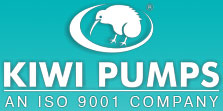
Pumps Information » Positive Displacement Pumps
Positive Displacement Pumps
Positive Displacement Pumps use rollers, gears, or impellers to move fluid into a fixed cavity so that when liquid exits, the vacuum that is created draws in more fluid. Positive displacement pumps are suitable for liquids with high viscosities and for applications that require high pressures. Typically, these self-priming devices are made of aluminum, brass or bronze, cast iron, plastic, or stainless steel. Positive displacement pumps are used in a variety of industrial, commercial, and municipal applications. For example, they are often used in the construction, maritime, mining, petrochemical, pulp and paper, and power generation industries.
Pumps that are rated for petrochemical and hydrocarbon applications are designed to move materials such as gasoline, kerosene, diesel oil, lubricating oil, paraffin wax, and asphalt. Pumps that can operate at 10,000 to 40,000 psi are used in surface preparation, the internal cleaning of pipes and heat exchangers, and concrete removal.Many types of positive displacement pumps are available. Bladder pumps are low-flow pneumatic devices used in sampling applications. Diaphragm and double-diaphragm pumps include suction and discharge check valves to prevent backflow.
Piston and plunger pumps use a plunger or piston to move media through a cylindrical chamber. Peristaltic pumps move media through a tube that is compressed at a number of points through contact with rollers or shoes. Gear pumps provide a more continuous, less pulsating flow than many other positive displacement pumps. Rotary lobe pumps are often used in food applications because of their ability to process solids. Grinder pumps shred solids, screw pumps transfer fluids along an axis, and well stimulation pumps are used to increase the production of wells. Progressive cavity pumps transfer fluid or media with suspended solids or slurries from the suction side of the pump to the discharge side of the pump from storage tanks or through pipelines.
Important specifications for positive displacement pumps include maximum discharge flow, maximum discharge pressure, inlet size, discharge size, and media temperature. Power sources include alternating current (AC), direct current (DC), compressed air, gasoline, diesel fuel, hydraulic systems, natural gas, water, steam, and solar energy. Pumps that do not include a power source typically provide a drive shaft for connection to a motor. Manually powered pumps rely upon hand or foot power.Positive displacement pumps are available with a variety of features. Adjustable speed pumps can operate at speeds selected by an operator. Continuous duty pumps maintain performance specifications at 100% duty cycle. Some positive displacement pumps are belt-driven, corrosion resistant, portable, or sanitary. Other devices are equipped with an analog or digital pressure gage.
